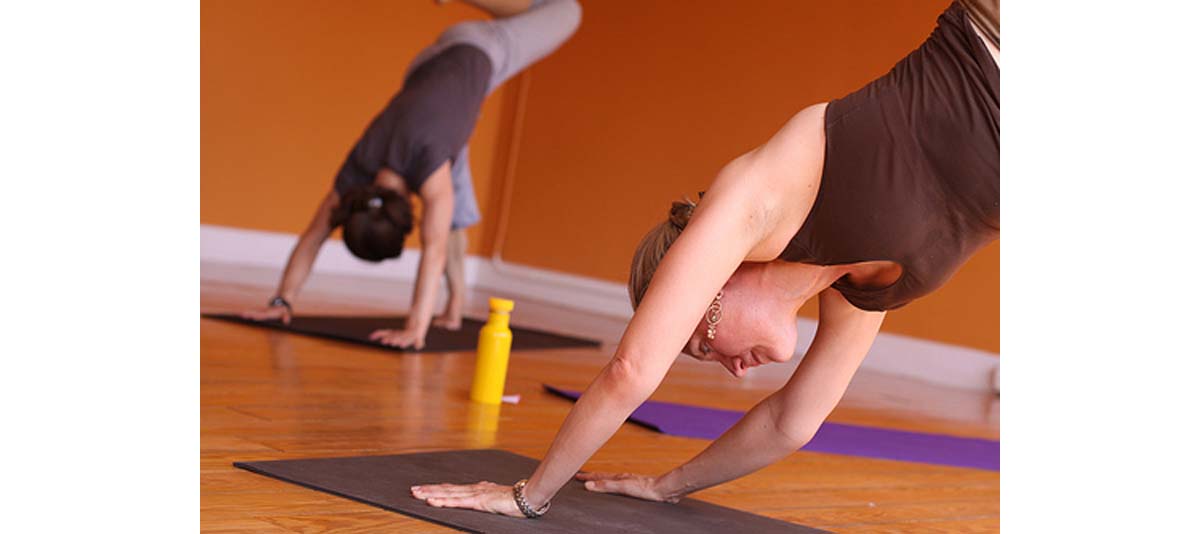We’ve all heard the excuses:
“I can’t train because I’ve got a bad hip.”
“My dodgy knees mean I can’t squat.”
“I gave up exercising because my joints were hurting.”
Clearly there are certain situations in which training can be extremely painful on your joints and where an injury, mobility issue or degenerative condition can mean that you genuinely can’t train. However, in 99.9 percent of cases, exercise can improve your joint worries and therewith your overall quality of life.

You’re well aware of the numerous health benefits training has – working out regularly improves your fitness, lowers your blood pressure and levels of bad cholesterol, reduces your risk of heart disease and strokes, and shreds fat, which can lower your risk of cancer and diabetes, builds muscle mass and generally makes you stronger, fitter and sexier.
However, some exercises can cause a lot of stress on your joints.
Running for instance is a high-impact form of cardiovascular exercise. It’s tremendously popular and one of the most common ways people choose to get fit. After all, running is free, and you can do it anytime, anywhere, and provided you have a tee shirt, some shorts and a pair of running shoes, you don’t need any fancy equipment or an expensive gym membership to get started with running.
Unfortunately though, running is not kind on your joints. Every stride you take creates a huge amount of force that travels through your foot and ankle, up your shins, into your knees, and along through your hips and even up your spine.
The younger you are, the lighter you are and the better your technique, the less this will affect you. However for a 250 pound, 50 year old male with poor running technique, the amount of impact will be far higher and potentially far more detrimental than it would be for an 18 year old guy, weighing 140 pounds who has been running cross country most of his life.
This isn’t meant to single out running as the ultimate offender in joint-destroying exercises. Jumping rope can have a similar impact as can playing competitive, fast-paced sports that involve quick turns and changes of direction such as basketball or soccer. Even some of your gym work can cause joint stress, which is once again exacerbated if your technique isn’t up to par.
While you may think that your thrice weekly runs, trips to the gym and weekend games of flag football or tag rugby are doing you the world of good, they could be having the opposite effect, at least where your joints are concerned.
What can I do if I have poor joint health?
By now you’re probably feeling quite disheartened and wondering what on earth you can do to get fitter, healthier, stronger and leaner without destroying your joints in the process.
The main key is to use good technique with whatever activity you’re doing, first and foremost. In almost every case, you’ll rarely get injured if you’re using perfect technique. Secondly, you’ve got to choose exercises that are right for you.
Running can be fine for many people, but it’s likely not a good choice if you’re overweight or haven’t trained in years. Likewise swimming, which is often recommended as a low impact, joint-friendly exercise may still give you trouble if you have certain joint mobility or strength issues.
Read on to find out the best methods of joint-friendly training.
The Best Joint-Friendly Exercises
Cardio
Any exercise that gets your heart rate up and makes you sweaty can be considered a cardio exercise, and these exercises are an important part of any workout routine as they increase general fitness and help you improve your endurance.
As mentioned, running generally falls under the “high-impact, high-risk” banner when it comes to your joints. If you’re dead set on running, hire a qualified running coach to help you optimize your technique and potentially save your joints.

You’d think this would play havoc with your knees and ankles, but this isn’t necessarily the case. Running up a hill actually shortens your stride length and decreases the time each foot is off the floor, leading to far less impact on landing and thereby being easier on the joints.
Swimming is a great choice, as the water takes a lot of your body-weight, meaning your joints don’t have to work to hold you up.
Cycling is another option, though this again depends on your own specific joint health. Plus there’s a difference between a steady half hour on a stationary bike at the gym and a day of mountain biking over rough terrain where you’re in and out of the saddle and racing down dunes and over dirt jumps.
Another slightly odd, but highly effective form of joint-friendly cardio is sled dragging. Powerlifting gyms and athletic training facilities often have weighted sleds that you can push or pull. You’ll get a fantastic cardio workout, and like hill sprints your total joint stress, training time and foot to floor impact is a lot lower than going out running. If you don’t have access to a sled, find yourself an old tire, secure a rope round it and pull it across a football field. This is unconventional training at its finest, but it’ll work and your joints will thank you for it.
Joint-Friendly Strength Training
Lower Body Exercises
Squats and deadlifts are awesome exercises but they can be stressful on your knees and hips. As a young, injury-free lifter you’re probably okay, but it’s worth bearing more joint-friendly variations in mind.
Single leg movements such as single leg squats, split squats, lunges and step-ups greatly reduce the force on your spine that’s created when you do squats and deadlifts with a barbell.
Try all these exercises with just your body weight first, before adding any extra weight. Slowly add extra weight if you feel you can handle it.
Upper Body Exercises
Bench presses and shoulder presses may be the cornerstone of gym strength programs, but if you’ve got bad shoulders, they’re both no-go exercises.
Try pushups instead.
Floor presses, where you lie on the floor and push a dumbbell or barbell above your head also reduce stress on your shoulder joint, but still hit your chest, delts and triceps.
Finally, don’t forget your back. Most back exercises have very little negative impact on your joints, but you may want to avoid behind the neck exercises.
Joint issues shouldn’t stop you training – it’s just a case of getting creative and making sure your exercise program helps to improve your joints, not make them worse.
- “Joint-Friendly Training”, By Nick Tumminello, Published on January 20, 2009, Accessed on March 16th, 2013, Retrieved from http://www.t-nation.com/free_online_article/sports_body_training_performance_repair/jointfriendly_training

